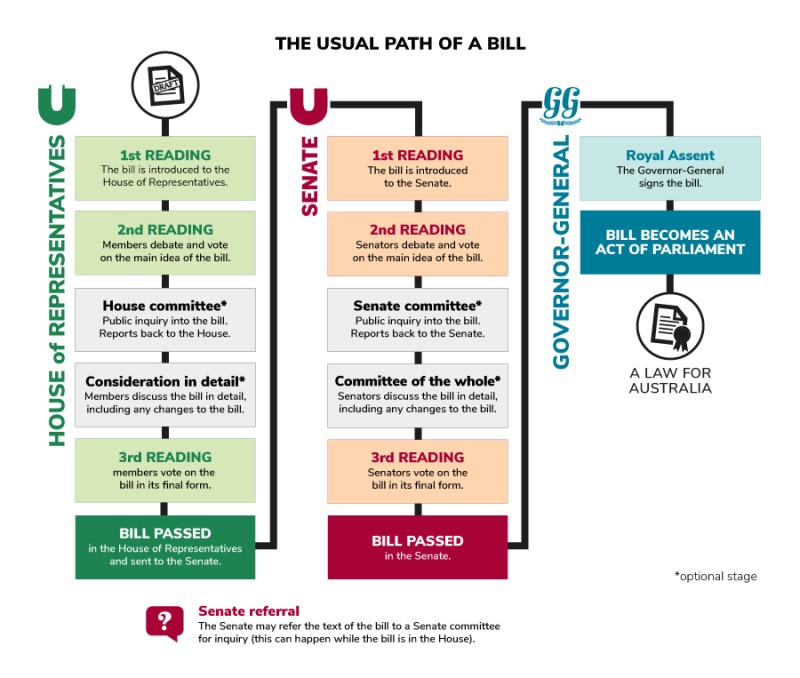How does an idea or recommendation from a government department become a bill and how do resources get allocated to the government department? How long does this process take?
Thank you for your question, Lucinda! Government departments communicate directly with the minister responsible for their department. The minister might choose to present an idea from the department to Cabinet for discussion. If Cabinet agrees to the idea, a bill – a proposed law – is drafted, and the minister introduces that bill to the Parliament. Resources are allocated by the government to the department and are explained in the Budget papers each year. Budget bills are considered by the Parliament and must be agreed to before resources can be allocated.
The process of making and passing a bill depends on how complicated, urgent or controversial a bill is. In the event of an emergency a bill can pass in a day. However it is more usual for it to take weeks or months in order to give the Parliament time to consider the bill carefully.
The usual path of a bill

Parliamentary Education Office (peo.gov.au)
Description
The usual path of a bill through the Australian Parliament to become Australian law.
In the House of Representatives a bill goes through the following stages:
- 1st reading – the bill is introduced to the House of Representatives
- 2nd reading – members debate and vote on the main idea of the bill
- House committee (optional stage) – public inquiry into the bill and reporting back to the House
- Consideration in detail (optional stage) – members discuss the bill in detail, including any changes to the bill
- 3rd reading – members vote on the bill in its final form
- the bill is passed in the House of Representatives and sent to the Senate.
Senate referral – the Senate may refer the text of the bill to a Senate committee for inquiry (this can happen while the bill is in the House).
In the Senate a bill goes through the following stages:
- 1st reading – the bill is introduced to the Senate
- 2nd reading – senators debate and vote on the main idea of the bill
- Senate committee (optional stage) – public inquiry into the bill and reporting back to the Senate
- Committee of the whole (optional stage) – senators discuss the bill in detail, including any changes to the bill
- 3rd reading – senators vote on the bill in its final form
- the bill is passed in the Senate.
The bill is given Royal Assent – The Governor-General signs the bill.
The bill becomes an Act of Parliament – a law for Australia.
This work is licensed under a Creative Commons Attribution-NonCommercial-NoDerivs 3.0 Unported License.
You are free to share – to copy, distribute and transmit the work.
Attribution – you must attribute the work in the manner specified by the author or licensor (but not in any way that suggests that they endorse you or your use of the work).
Non-commercial – you may not use this work for commercial purposes.
No derivative works – you may not alter, transform, or build upon this work.
Waiver – any of the above conditions can be waived if you get permission from the copyright holder.
